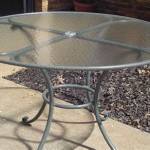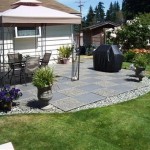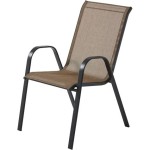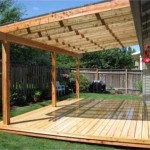Creating Relaxing and Enjoyable Patio Gardens
Patio gardens offer an accessible and versatile means of connecting with nature, regardless of spatial constraints. These outdoor living spaces, typically adjacent to a residence, can be transformed into tranquil retreats conducive to relaxation, entertainment, and personal enrichment. Cultivating a successful patio garden involves careful planning, thoughtful plant selection, and a commitment to consistent maintenance. The goal is to craft an environment that is both aesthetically pleasing and functionally suited to the desired lifestyle.
The design process should begin with a thorough assessment of the available space. Consider the patio's dimensions, orientation (sun exposure), and existing structural features. Note any challenges, such as limited sunlight, strong winds, or drainage issues. Inventory existing furniture and accessories that you intend to keep. Taking these factors into account early on will streamline the planning and prevent later frustrations. This also allows for a realistic expectation of what can be achieved within the boundaries of the patio. The existing architecture of the house should also be considered, aiming for a patio garden that complements the overall style.
Before embarking on any planting, it is crucial to understand the local climate and microclimate of the patio. Hardiness zones, average rainfall, and temperature fluctuations significantly impact plant selection. A patio enclosed by walls may experience higher temperatures than the surrounding garden, requiring heat-tolerant plant species. Conversely, a shaded patio may necessitate shade-loving varieties. Understanding these nuances ensures plants thrive and avoids costly replacements due to unsuitable conditions. A soil test can also be beneficial to determine appropriate amendments if necessary.
Strategic Plant Selection for Ambiance and Function
Plant selection is a pivotal element in shaping the patio garden's character and functionality. Consider the desired ambiance: Do you envision a lush, tropical oasis, a minimalist Zen garden, or a vibrant, colorful display? Each aesthetic requires a different palette of plants, incorporating varying textures, colors, and forms. Think about layering plants, placing taller specimens at the back and progressively shorter ones towards the front to create depth and visual interest. Additionally, consider the plants’ growth habits to avoid overcrowding and ensure they remain in scale with the patio space.
For creating a relaxing atmosphere, consider incorporating plants with calming scents. Lavender, jasmine, and chamomile emit fragrances known to reduce stress and promote tranquility. These can be strategically placed near seating areas or pathways to maximize their aromatic impact. Ensure that the soil is well-draining, and the plants receive the appropriate sunlight for optimal flowering and fragrance production. Certain herbs, such as mint and lemon balm, can also be incorporated for their aromatic qualities and their culinary use, adding a practical dimension to the garden.
Plants can also serve a practical purpose in the patio garden. Consider using climbing vines or trellised plants to create a privacy screen or to provide shade from the sun. Evergreen shrubs can provide year-round visual screening and act as a windbreak. Selecting appropriate plant species for these purposes can enhance the utility and comfort of the patio space, making it more inviting and functional. When selecting plants for privacy, consider their mature height and spread to ensure they provide adequate screening over time. Bamboo is another option, but it needs to be contained to prevent aggressive spreading.
Variety is key to maintaining interest throughout the year. Include plants that offer seasonal blooms or changes in foliage color. Spring-blooming bulbs, summer annuals, and fall-foliage shrubs can provide a continuous display of color and texture. Consider incorporating plants with interesting bark or structural forms to add visual appeal during the dormant winter months. Planning for year-round interest ensures the patio garden remains engaging and attractive regardless of the season. This approach requires considering the life cycle and bloom times of different plant species and creating a balanced planting scheme.
Creating Comfortable and Functional Zones
Divide the patio garden into distinct zones based on their intended purpose. A dining area may require a sturdy table and chairs, shaded by an umbrella or pergola. A lounging area could feature comfortable seating, such as outdoor sofas or hammocks, surrounded by lush plantings. A cooking area may necessitate a grill, outdoor kitchen, or herb garden within easy reach. Defining these zones creates a structured and functional space that caters to specific activities and needs.
Consider traffic flow when planning the layout of the patio garden. Ensure pathways are wide enough for comfortable movement and that furniture is arranged to avoid obstructions. Clearly defined pathways also protect planting beds from foot traffic and maintain the integrity of the design. Using stepping stones or pavers can create a more formal pathway, while gravel or mulch can provide a more natural and informal look. Think about how people will naturally move through the space and accommodate their movement patterns.
Lighting plays a crucial role in extending the usability of the patio garden into the evening hours. Strategically placed lights can create a warm and inviting ambiance, highlighting key features and enhancing safety. String lights, lanterns, and spotlights can be used to illuminate pathways, seating areas, and focal points. Consider using solar-powered lights for an energy-efficient and eco-friendly option. Integrating lighting into the design adds a new dimension to the patio garden, transforming it into a magical space after dark. Consider the intensity and color temperature of the lights to create the desired mood.
Furniture selection profoundly influences the comfort and style of the patio garden. Choose durable, weather-resistant materials that can withstand the elements. Wicker, teak, and aluminum are popular choices for outdoor furniture. Select cushions and fabrics that are fade-resistant and water-repellent. Prioritize comfort and ergonomics when selecting seating options, ensuring they are conducive to relaxation and conversation. The style of the furniture should complement the overall design aesthetic of the patio garden, creating a cohesive and harmonious look.
Maintaining a Thriving Patio Garden
Consistent maintenance is essential for ensuring the long-term health and beauty of the patio garden. Implement a regular watering schedule, adjusting frequency based on weather conditions and plant needs. Monitor plants for signs of pests or diseases and take prompt action to prevent infestations. Prune plants regularly to maintain their shape and encourage healthy growth. Deadheading spent flowers promotes continued blooming and prevents seed formation. Neglecting these maintenance tasks can lead to a decline in the health and appearance of the patio garden.
Container plants require more frequent watering and fertilization than plants in the ground. The limited soil volume in containers dries out quickly, necessitating regular irrigation. Use a slow-release fertilizer or liquid fertilizer to provide essential nutrients. Repotting plants into larger containers as they grow prevents them from becoming root-bound. Container gardening offers flexibility and control over soil conditions, but it also demands more diligent care and attention.
Protecting plants from extreme weather conditions is crucial for their survival. During periods of intense heat, provide shade for sensitive plants or move them to a cooler location. Protect plants from frost by covering them with blankets or moving them indoors. Water plants thoroughly before a freeze to help insulate the roots. Taking these precautions safeguards plants from damage and ensures their continued health and vitality. Windbreaks can also be used to protect plants from strong winds that can desiccate foliage and damage stems.
Maintaining the cleanliness of the patio garden enhances its appeal and prevents the spread of pests and diseases. Regularly sweep or hose down surfaces to remove dirt and debris. Clean furniture and accessories to prevent mildew and mold. Remove fallen leaves and dead plant material to prevent fungal growth. A well-maintained patio garden is not only more visually appealing but also creates a healthier environment for plants and people. Consider pressure washing the patio surface annually to remove stubborn stains and grime.
Integrating accessories, such as pots, sculptures, and water features, can enhance the visual appeal of the patio garden. Choose pots that complement the style of the plants and the overall design aesthetic. Sculptures can add a touch of whimsy or elegance. Water features, such as fountains or birdbaths, can create a soothing and tranquil atmosphere. Select accessories that are durable and weather-resistant, and arrange them in a way that enhances the overall composition of the patio garden. Consider the scale and proportion of the accessories in relation to the size of the patio space.

Garden Rooms Ideas For Creating Inspired Outdoor Spaces Design

19 Patio Ideas For Small Outdoor Spaces Garden

Creating A Relaxing Outdoor Oasis With Budget Friendly Pieces

19 Patio Ideas For Small Outdoor Spaces Garden

Garden Rooms Ideas For Creating Inspired Outdoor Spaces Design

How To Create A Relaxing Outdoor Oasis Better Homes And Gardens
What Are The Popular Small Garden Ideas For A New Home Quora

How To Create A Relaxing Backyard Space Princeton Real Estate
:max_bytes(150000):strip_icc()/afrobohemianlivinggarden-33c63381099241158c8f0ee966952ed4.jpg?strip=all)
23 Patio Garden Ideas That Will Inspire You

37 Small Backyard Decor Ideas Landscaping Tips For Yards
Related Posts








